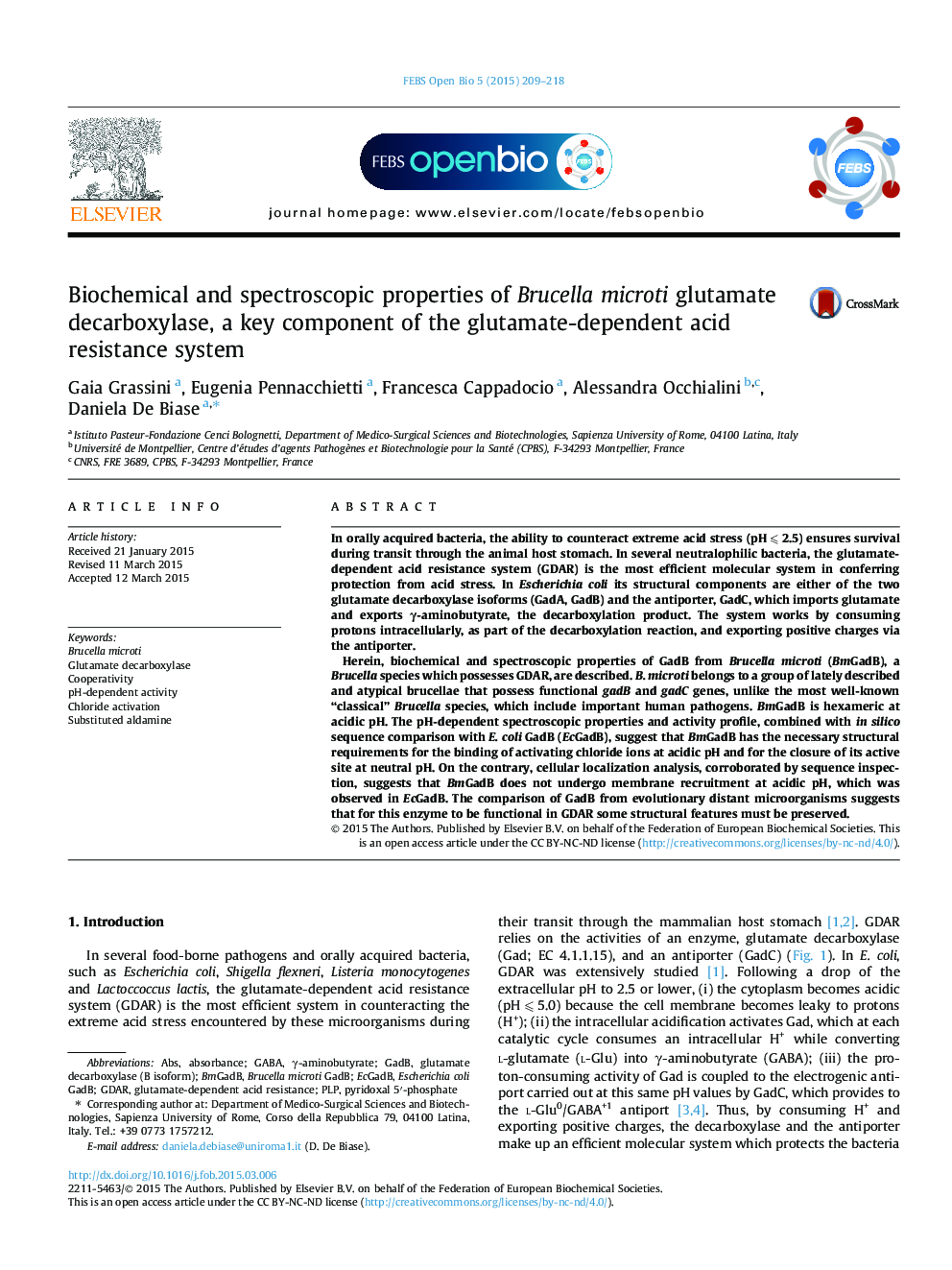| کد مقاله | کد نشریه | سال انتشار | مقاله انگلیسی | نسخه تمام متن |
|---|---|---|---|---|
| 1981577 | 1539419 | 2015 | 10 صفحه PDF | دانلود رایگان |
• Brucella microti GadB shares many features with the Escherichia coli homolog.
• Brucella microti GadB undergoes auto-inactivation at pH above 5.5.
• Brucella microti GadB is activated by chloride ions, which are abundant in gastric secretions.
• Brucella microti GadB belongs to the GadB from ancestral and environmental brucellae.
In orally acquired bacteria, the ability to counteract extreme acid stress (pH ⩽ 2.5) ensures survival during transit through the animal host stomach. In several neutralophilic bacteria, the glutamate-dependent acid resistance system (GDAR) is the most efficient molecular system in conferring protection from acid stress. In Escherichia coli its structural components are either of the two glutamate decarboxylase isoforms (GadA, GadB) and the antiporter, GadC, which imports glutamate and exports γ-aminobutyrate, the decarboxylation product. The system works by consuming protons intracellularly, as part of the decarboxylation reaction, and exporting positive charges via the antiporter.Herein, biochemical and spectroscopic properties of GadB from Brucella microti (BmGadB), a Brucella species which possesses GDAR, are described. B. microti belongs to a group of lately described and atypical brucellae that possess functional gadB and gadC genes, unlike the most well-known “classical” Brucella species, which include important human pathogens. BmGadB is hexameric at acidic pH. The pH-dependent spectroscopic properties and activity profile, combined with in silico sequence comparison with E. coli GadB (EcGadB), suggest that BmGadB has the necessary structural requirements for the binding of activating chloride ions at acidic pH and for the closure of its active site at neutral pH. On the contrary, cellular localization analysis, corroborated by sequence inspection, suggests that BmGadB does not undergo membrane recruitment at acidic pH, which was observed in EcGadB. The comparison of GadB from evolutionary distant microorganisms suggests that for this enzyme to be functional in GDAR some structural features must be preserved.
Figure optionsDownload as PowerPoint slide
Journal: FEBS Open Bio - Volume 5, 2015, Pages 209–218
